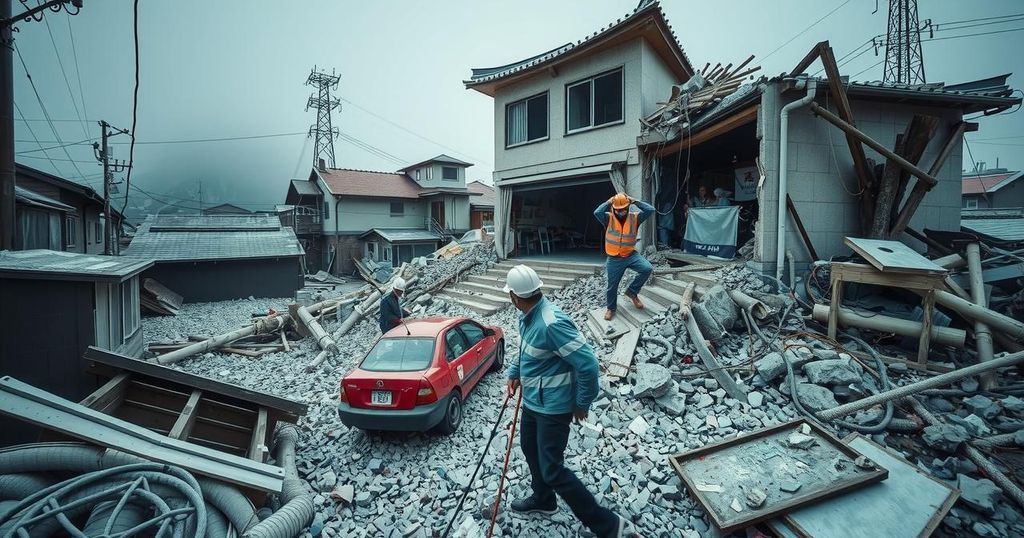Post-Quake Fatalities in Central Japan Expected to Rise Amid Processing Backlog
Following the recent earthquake in Ishikawa Prefecture, Japan, it is predicted that the number of related fatalities may rise by approximately 200 pending cases. The total deaths surpass 500, predominantly from post-disaster conditions, with many more applications awaiting processing. Families could receive financial aid for recognized deaths under disaster relief provisions.
The death toll following the powerful earthquake that struck Ishikawa Prefecture and neighboring regions in central Japan on New Year’s Day of 2024 is anticipated to increase significantly, as municipal authorities report around 200 pending cases awaiting classification as earthquake-related fatalities. Approximately one year after the magnitude-7.6 earthquake devastated the Noto Peninsula, the overall fatalities have surpassed 500, with a majority occurring in evacuation centers due to the disaster’s aftermath. Notably, more than 200 death applications in Ishikawa remain unprocessed, separate from the estimated 230 lives lost during the earthquake’s immediate impact, including individuals trapped beneath collapsed infrastructure.
Official recognition of these deaths as disaster-related entitles grieving families to compensation of up to 5 million yen (approximately $32,000) under the law regarding disaster condolence grants. Among the approximately 270 certified post-disaster fatalities in Ishikawa, approximately 20 percent occurred three months or more after the earthquake, with a significant proportion of victims being elderly. According to the prefectural government, in a review of 115 cases disclosed by late December, “distress after the earthquake and fear of aftershocks” was cited in 89 instances as a major contributing factor to death; this was followed by issues related to disrupted essential services, such as electricity and water, and conditions experienced in evacuation centers.
In addition to Ishikawa, there have been a small number of post-disaster death recognitions in Niigata and Toyama prefectures. However, the bureaucratic process has faced considerable delays, resulting in municipalities processing fewer than 20 applications each month, thus exacerbating the backlog.
In the wake of a significant earthquake that struck central Japan on New Year’s Day 2024, there has been growing concern regarding the rising number of fatalities attributable to the disaster. The earthquake, registering a magnitude of 7.6, caused extensive devastation on the Noto Peninsula, leading to both immediate casualties and a series of health complications exacerbated by the disaster’s aftermath. This has prompted authorities to examine deaths occurring long after the quake, revealing a troubling trend of fatalities among an elderly population particularly affected by the trauma and disruption caused by the earthquake and subsequent evacuation conditions.
The grim reality following the earthquake in Ishikawa Prefecture is that the toll on human life is likely to intensify as more cases are evaluated for recognition as disaster-related deaths. The fact that many of these deaths stem from the challenges of recovery, particularly among vulnerable populations such as the elderly, highlights the enduring impact of natural disasters on communities. With municipal processing efforts lagging behind, urgent attention is necessary to address the backlog and deliver timely support to affected families.
Original Source: english.kyodonews.net




Post Comment